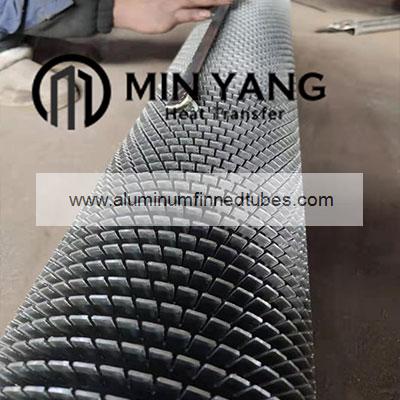What are the requirements for high-frequency welded finned tubes in the process of fusion welding
In the process of high-frequency welding of finned tubes, if the atmosphere is in direct contact with the high-temperature molten pool, the oxygen in the atmosphere will oxidize metals and various alloying elements. Nitrogen, water vapor, etc. in the atmosphere enter the molten pool, and also form defects such as pores, slag inclusions, and cracks in the weld during the subsequent cooling process, deteriorating the quality and performance of the weld.

In order to improve the welding quality, various protection methods have been developed. For example, gas shielded arc welding is to use argon, carbon dioxide and other gases to isolate the atmosphere to protect the arc and molten pool rate during welding; for example, when welding steel, titanium-iron powder, which has a high affinity for oxygen, is added to the electrode coating for deoxidation. It can protect the beneficial elements such as manganese and silicon in the electrode from being oxidized and entering the molten pool, and obtain a high-quality weld after cooling.
A common feature of various pressure welding methods is that pressure is applied during the welding process without the addition of filler material. Most pressure welding methods, such as diffusion welding, high frequency welding, cold pressure welding, etc., do not have a melting process, so there is no problem of burning of beneficial alloying elements and intrusion of harmful elements into the weld like fusion welding, thus simplifying the welding process. It also improves welding safety and hygiene conditions.
At the same time, because the heating temperature is lower than that of fusion welding and the heating time is shorter, the heat affected zone is small. Many materials that are difficult to weld by fusion welding can often be welded into high-quality joints with the same strength as the base metal by pressure welding. The seam that is formed during welding and connects two connected bodies is called a weld.
During welding, both sides of the weld will be subjected to welding heat, and the structure and properties will change. This area is called the heat-affected zone. During welding, the welding material, welding current, etc. of the workpiece material are different. To deteriorate the weldability, it is necessary to adjust the welding conditions. Preheating at the interface of the weldment before welding, heat preservation during welding and post-weld heat treatment can improve the welding quality of the weldment.

